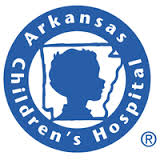Shilla Growth Permitting Spinal Instrumentation System for Treatment of Scoliosis in the Immature Spine
| Status: | Terminated |
|---|---|
| Conditions: | Orthopedic |
| Therapuetic Areas: | Orthopedics / Podiatry |
| Healthy: | No |
| Age Range: | 1 - 10 |
| Updated: | 5/6/2016 |
| Start Date: | April 2005 |
| End Date: | April 2015 |
Use of the Shilla Growth Permitting Spinal Instrumentation System/Technique for the Treatment of Scoliosis in the Immature Spine
The objective of this study is to retrospectively and prospectively review patients who have
undergone this technique looking at age of the patient, magnitude of the curve
preoperatively, postoperatively and over time, diagnosis, pulmonary function, surgical
procedures, complications, and spinal growth.
The hypothesis is that Shilla growth permitting spinal instrumentation coupled with a
surgical technique of aggressive correction of the apex of the scoliotic curve wil allow for
natural growth of the spine in a guided fashion with a limited number of future surgeries
required.
undergone this technique looking at age of the patient, magnitude of the curve
preoperatively, postoperatively and over time, diagnosis, pulmonary function, surgical
procedures, complications, and spinal growth.
The hypothesis is that Shilla growth permitting spinal instrumentation coupled with a
surgical technique of aggressive correction of the apex of the scoliotic curve wil allow for
natural growth of the spine in a guided fashion with a limited number of future surgeries
required.
Traditional "growing rod" constructs of spinal instrumentation to treat severe scoliosis in
young children require a return to the operating room every six to nine months until
skeletal maturity. The Shilla system allows for more spinal growth with fewer surgical
procedures necessary for lengthenings. This is a major advantage over existing growth
permitting systems and allows surgery to be performed at younger ages with better deformity
correction without concerns of repeated surgeries.
young children require a return to the operating room every six to nine months until
skeletal maturity. The Shilla system allows for more spinal growth with fewer surgical
procedures necessary for lengthenings. This is a major advantage over existing growth
permitting systems and allows surgery to be performed at younger ages with better deformity
correction without concerns of repeated surgeries.
Inclusion Criteria:
- between the ages of 1 yr and 10 yrs
- have severe, progressive scoliosis unresponsive to bracing
- have severe, progressive scoliosis who cannot tolerate bracing
Exclusion Criteria:
We found this trial at
1
site
Arkansas Children's Hospital Arkansas Children's Hospital (ACH) is the only pediatric medical center in Arkansas...
Click here to add this to my saved trials
